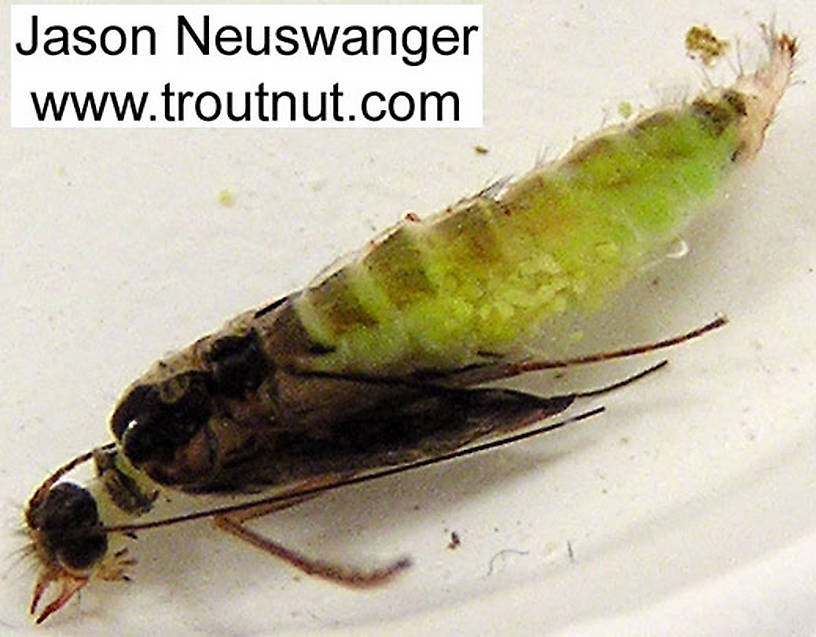
Hex Mayflies
Hexagenia limbata
The famous nocturnal Hex hatch of the Midwest (and a few other lucky locations) stirs to the surface mythically large brown trout that only touch streamers for the rest of the year.
Featured on the forum

I was not fishing, but happened to be at an unrelated social event on a hill above this tiny creek (which I never even saw) when this stonefly flew by me. I assume it came from there. Some key characteristics are tricky to follow, but process of elimination ultimately led me to Sweltsa borealis. It is reassuringly similar to this specimen posted by Bob Newell years ago. It is also so strikingly similar to this nymph from the same river system that I'm comfortable identifying that nymph from this adult. I was especially pleased with the closeup photo of four mites parasitizing this one.

Troutnut is a project started in 2003 by salmonid ecologist Jason "Troutnut" Neuswanger to help anglers and
fly tyers unabashedly embrace the entomological side of the sport. Learn more about Troutnut or
support the project for an enhanced experience here.

I was surprised how bright green this pupa is. It's chartreuse. After collecting it, I experimented with melting down chartreuse jigs and making little translucent rubber caddis abdomens on my flies. They looked good, and the trout liked them, but they weren't very durable at all. This specimen is recently deceased in the photographs.
Litobrancha on Sep 23, 2006September 23rd, 2006, 10:55 am EDT
This is cheumatopsyche female. note at the posterior end of the abdomen the two semi-rectangular plates that are distinct to the base, that is a good diagnostic for cheumatopsyche.
[edited by Troutnut: added title]
[edited by Troutnut: added title]

